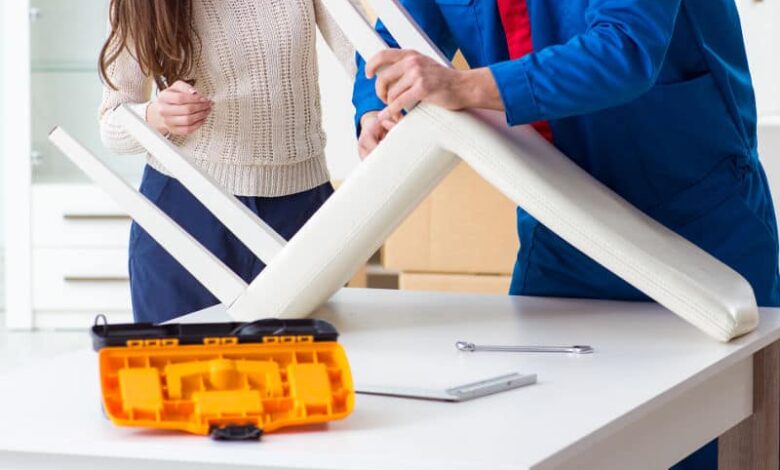How to Fix Squeaky Wooden Chairs: Easy DIY Repair Guide

If you’ve ever sat down for dinner only to be greeted by an irritating creak… squeak… groan from your chair, you’re not alone. Squeaky wooden chairs are one of those little household annoyances that can turn peaceful moments into frustrating ones. They squeal at the wrong time—during family meals, Zoom meetings, or even when you’re sneaking a midnight snack.
The good news? You don’t have to toss out your favorite chair or call in a carpenter. Fixing squeaky wooden chairs is usually simple, inexpensive, and surprisingly satisfying. This article walks you through why chairs squeak, how to diagnose the problem, and practical step-by-step solutions to restore silence to your seating.
Why Do Wooden Chairs Squeak?
Wood is a natural, living material. It expands and contracts with changes in humidity, gets worn down with age, and develops tiny shifts in its joints. Here are the most common culprits behind squeaks:
- Loose Joints – Over time, the glue or dowels holding chair joints together weaken, allowing pieces to rub against each other.
- Worn Screws or Nails – Metal fasteners loosen as wood ages, leading to friction and noise.
- Dry Wood – Lack of moisture makes the wood brittle, causing cracks or squeaky rubbing surfaces.
- Weight Pressure – Constant sitting and shifting puts stress on the chair’s frame, loosening connections.
Understanding the cause helps you choose the right fix instead of applying a temporary patch.
Tools and Supplies You May Need
Most repairs for squeaky wooden chairs don’t require advanced tools. A basic home toolkit will usually do the trick:
- Screwdriver (flathead and Phillips)
- Wood glue (preferably carpenter’s glue)
- Small hammer or mallet
- Sandpaper (medium-grit)
- Clamps (for holding glued joints together)
- Wood filler (optional for cracks)
- Candle wax, beeswax, or bar soap (for lubrication)
Step-by-Step Guide to Fix Squeaky Wooden Chairs
1. Identify the Source of the Squeak
Sit on the chair and gently rock side to side. Press down on each leg, arm, and backrest to pinpoint where the noise is coming from. Sometimes, you’ll need a second person to sit while you listen closely.
2. Tighten All Screws and Bolts
Grab a screwdriver and tighten any visible screws. Even if the squeak isn’t from that joint, loose screws can spread stress to other parts of the chair. If the screws are stripped, replace them with slightly longer ones for a firmer grip.
Pro tip: Before reinserting screws, rub them with candle wax. This reduces friction and prevents future squeaks.
3. Re-Glue Loose Joints
If you notice wobbly parts, the glue has likely failed. To fix this:
- Carefully separate the joint (tap gently with a rubber mallet if needed).
- Sand off old glue residue.
- Apply fresh wood glue evenly.
- Clamp the pieces tightly together and let them dry for at least 24 hours.
This step is crucial because most squeaks in wooden chairs come from weakened joints.
4. Lubricate Friction Points
For joints that can’t be easily taken apart, apply a little lubrication:
- Rub candle wax, beeswax, or even bar soap into the creaky joint.
- Work the chair back and forth to allow the lubricant to settle.
Avoid using oil (like WD-40) on wood. It can soak in and stain the chair, causing long-term damage.
5. Fill Cracks or Gaps
If the chair has visible cracks, squeaks can come from wood rubbing against itself.
- Apply wood filler or glue into the crack.
- Sand smooth once dry.
- Refinish if needed to match the chair’s color.
6. Check the Legs and Floor Contact
Sometimes squeaks come from uneven legs rubbing against the floor. Stick felt pads under the legs to reduce both squeaks and scratches. This is especially helpful for hardwood or tile floors.
Preventing Future Squeaks
Once you’ve silenced your chair, you’ll want to keep it that way. Here’s how to prevent squeaky surprises in the future:
- Maintain Humidity – Wood shrinks in dry air. Using a humidifier in winter can prevent joints from loosening.
- Regular Tightening – Check screws and joints every few months. A quick tightening prevents bigger repairs later.
- Avoid Overloading – Wooden chairs aren’t designed for extreme weight or rough use. Treat them gently to extend their life.
- Polish and Protect – Use furniture wax or polish to nourish the wood and reduce friction.
When to Call a Professional
Most squeaks are easy DIY fixes, but if your chair is an antique, expensive, or structurally cracked, it’s better to consult a furniture restorer. They’ll ensure repairs preserve both the function and value of your piece.
Why Bother Fixing Squeaky Wooden Chairs?
At first glance, a squeak might feel like a minor annoyance. But fixing it has deeper benefits:
- Comfort – No one likes sitting on a chair that sounds like it’s about to collapse.
- Longevity – Small repairs prevent bigger damage, saving money in the long run.
- Sustainability – Repairing instead of replacing keeps good furniture out of landfills.
- Sentimental Value – Many wooden chairs are family heirlooms. Restoring them keeps memories alive.
Final Thoughts
Squeaky wooden chairs don’t have to ruin your quiet evening or embarrass you at dinner parties. With a few basic tools, some patience, and a little know-how, you can silence those creaks and restore your chair to its original charm.
Next time your chair groans under pressure, remember: it’s not a sign of weakness—it’s simply asking for a little care. A few turns of a screwdriver, a dab of glue, and a touch of wax can transform that squeaky annoyance into sturdy, peaceful seating once again.